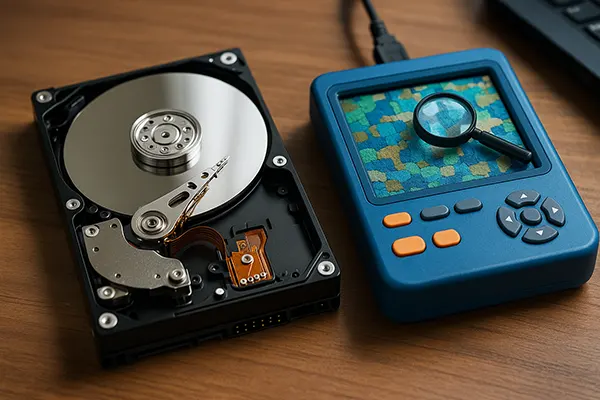File carving: how to extract data from damaged disk sectors without a partition table

When conventional recovery methods fail due to the absence or corruption of a partition table, file carving becomes a crucial technique. It enables digital forensics experts and IT professionals to recover valuable data directly from raw disk sectors by identifying known file signatures and structural patterns. This article offers a detailed exploration of file carving methods as of June 2025, their practical applications, and tools that enable efficient data extraction even in severe disk damage scenarios.
Understanding the principles of file carving
File carving is the process of recovering files based solely on their binary structure, without relying on file system metadata or partition tables. It involves scanning the raw disk or memory space and identifying the beginning and end of files through unique headers and footers. This method is essential when the file system is unreadable or has been entirely overwritten.
Typical file types with known structures—like JPEG, PNG, PDF, DOCX, and MP4—are excellent candidates for carving. Each of these formats includes distinct binary signatures that act as beacons for recovery tools. For example, JPEG files start with the hexadecimal value `FFD8` and end with `FFD9`, providing clear boundaries for extraction.
The effectiveness of carving relies on understanding these patterns and using tools capable of matching them efficiently. Since this process bypasses the logical structure of storage media, it’s often used in digital forensic investigations and disaster recovery.
When and why file carving is used
File carving is commonly applied in cases where partitions have been deleted, reformatted, or severely corrupted by malware or hardware failure. In forensic contexts, it allows specialists to reconstruct files from fragmented storage for use as digital evidence. In enterprise IT, carving may help retrieve key operational data after accidental formatting or RAID breakdowns.
This method is particularly useful when data must be salvaged from USB drives, SSDs, memory cards, or disk images (like E01 or RAW) where traditional recovery approaches cannot locate file tables. It can also assist with restoring data from overwritten or damaged volumes using imaging and signature-based scanning.
Despite its strengths, carving has limitations—especially with fragmented files. It often cannot reassemble files spread across non-contiguous sectors unless supplemented by intelligent heuristics or manual intervention.
Techniques and tools for effective file carving
The process of carving begins by creating a forensic image of the affected medium using tools like FTK Imager or `dd`. This image is then scanned for known file signatures using dedicated carving software. One of the most widely used open-source tools is `Scalpel`, a fast and flexible carving tool that supports custom signature configuration for various file types.
Another tool, `PhotoRec`, is known for its efficiency in recovering media files and documents, even from severely damaged drives. `Foremost`, originally developed by the U.S. Air Force, is another powerful utility that works well with forensic disk images. These tools operate in read-only mode, ensuring the original data remains unaltered.
For more advanced analysis, commercial suites like X-Ways Forensics or Magnet AXIOM provide comprehensive carving capabilities with visual interfaces, metadata reconstruction, and built-in format validators. They also support batch processing and integration with case management tools, streamlining workflows for forensic teams.
Steps for accurate data recovery
To successfully carve files, follow these core steps: 1. Clone the damaged medium to a forensic image using bit-by-bit duplication. 2. Identify the file types to recover and their corresponding header/footer signatures. 3. Configure the carving tool to target these patterns. 4. Analyse the carved files to validate integrity and completeness.
It is critical to work on a copy of the disk to prevent accidental data overwriting. Use write-blockers or mount images in read-only mode. Also, document every step if the data is intended for legal or audit purposes.
When dealing with fragmented files, manual recovery or hybrid approaches—like combining carving with journaling data or volume shadow copies—may yield better results. In RAID systems, consider reconstructing the logical array before initiating carving.

Limitations and best practices in modern environments
While file carving remains a powerful tool, it has inherent constraints. Carving cannot recover filenames, directory structures, or metadata unless fragments of the file system remain. Additionally, modern encryption or compression techniques can complicate signature recognition and extraction.
Fragmentation poses another major obstacle. Files that are scattered across different sectors may be partially recovered or unreadable if the carving software lacks the ability to reassemble them. Moreover, carved data often lacks contextual information, requiring further analysis to determine relevance or authenticity.
To maximise the success rate, always combine carving with other forensic methods. Where available, analyse volume shadow copies, system restore points, or memory dumps for references to original files. Use hash comparison with known good datasets to validate recovered data.
Future trends and developments in file carving
As of 2025, research in machine learning-based file carving is growing. New algorithms can recognise patterns across fragmented or obfuscated data, increasing the success rate of recovery. These systems learn from existing file datasets and use statistical models to identify partial matches and likely continuations.
Tools are also evolving to better support proprietary file formats and embedded systems, such as IoT devices or smart cards. With the increasing complexity of file structures and storage media, carving methods must adapt to include metadata prediction, multi-pass scanning, and AI-assisted validation.
Future developments are expected to focus on hybrid recovery solutions—where carving is integrated with metadata emulation, log parsing, and cloud sync traces—to provide a more holistic view of damaged or lost data. These advancements will further solidify file carving as a vital method in digital forensics and data recovery.



